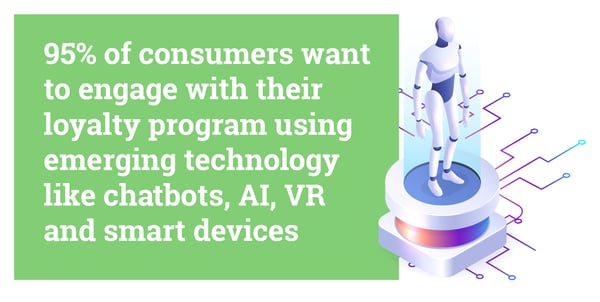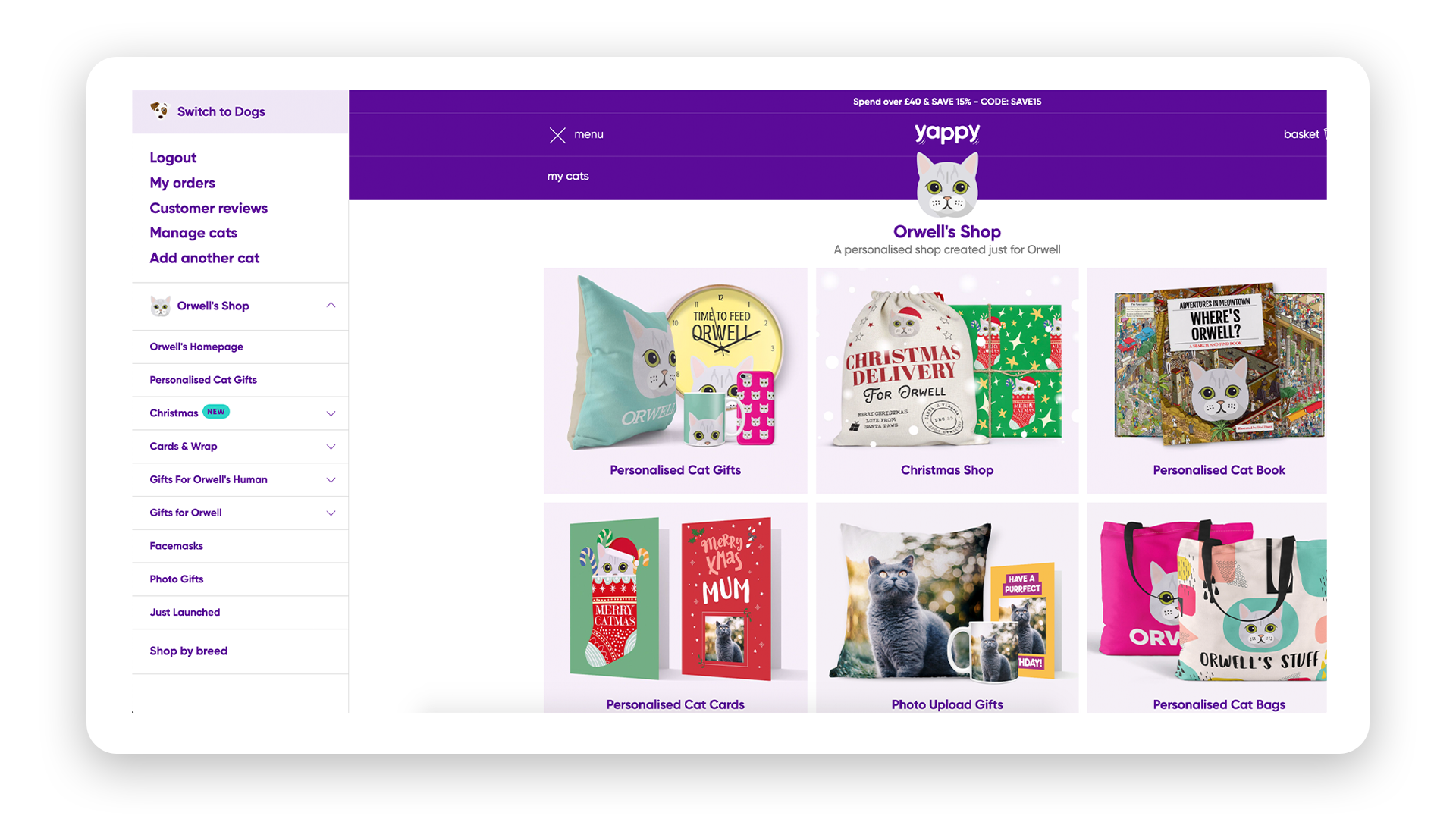How to Increase Your Startup’s Customer Retention Rates
Is there anything worse than the niggling feeling that no-one wants you at the party?
Whether it’s unintentional or just plain paranoia, nobody enjoys feeling like they’re getting the cold shoulder - especially not your customers. It’s a phenomenon known as perceived indifference, and it’s the reason why 68% of people leave your business; your customers think that you don’t care about them.
As a startup, you’ve spent a lot of time crafting your brand image, content, value proposition, marketing strategy, etc., to convince prospective customers that you’re the right choice for them. Now, we know that this takes a lot of time and resources. So much so, that many startups become hyper-focused on getting customers to convert and they forget that customer retention is the real aim of the game.
Source: Startups Magazine
What is Customer Retention?
Customer retention is the process of turning new customers into returning customers using various tactics that foster positive customer relationships.
Customer retention is incredibly valuable to startups as returning customers spend 33% more on average than new customers due to brand familiarity and the potential for upselling.
There are a few key metrics that you will need to be aware of to track customer retention accurately:
1. Customer retention rate (CRR)
To calculate CRR, you will need to define a period of measurement (monthly, quarterly, yearly, etc.) and know the following:
- Number of customers at the start of a period (S)
- Number of new customers acquired during that period (N)
- Number of customers at the end of that period (E)
You can then use the following formula to calculate your startup’s CRR rate:
Customer Retention Rate = ((E-N)/S) x 100
2. Customer churn rate (CCR)
Churn is the term used to define a customer leaving your business. To calculate CCR, you should again determine a period of measurement (monthly, quarterly, yearly, etc.) and know the following:
- Number of customers at the start of a period (S)
- Number of customers lost over a period (L)
You can then use the following formula to calculate your startup’s CCR rate:
Customer churn rate (CCR) = (L ÷ S) x 100
3. Revenue Churn Rate (RCR)
Revenue churn rate can be an incredibly helpful metric for startups that deal with free trials and subscription-based customer journeys.
Source: Gartner
Whose responsibility is customer retention?
If you’re currently struggling with customer retention, you might be thinking: “Well, that’s not my department; the _______ team needs to pull up their socks.” And you would be wrong. Not only does this thinking foster the kind of infighting that tanks promising startups, but when it comes to retention, experts believe that teamwork makes the dream work.
Evaluate and optimise the processes of your marketing, sales, and product teams to ensure they are all customer-focused within their departments. For retention optimisation:
- The marketing team should address customer pain points with personalised content.
- The sales team should demonstrate product value with follow-up communication.
- The product team should listen and address customer feedback with updates.
Be sure to set customer-orientated goals for each team and create an environment of communication to ensure they complete any cross-department initiatives seamlessly. After all, there’s no point in training up your marketing and sales teams to be experts in customer success, if they are going to harbour any issues reported by customers rather than share them with the product team for development. A scenario like this will only lead to frustrated customers who churn because you are not solving their problems.
How to Increase Your Startup’s Customer Retention Rates
-
Design a seamless, omnichannel customer experience (CX)
Source: Digital Commerce 360
From onboarding to customer service, and everything in between, your startup needs to design a seamless omnichannel customer experience (CX) to keep your customers happy. We live in a connected world; we move from our mobiles to desktops to brick-and-mortar stores, texting to video calls to in-person exchanges. The ability to connect with a brand instantly, at any time or place is now something that customers expect rather than desire.
But what exactly does omnichannel mean and why is it different from multi-channel?
Well, omni comes from the Latin word omnis, meaning every or all, whereas multi means many. The critical distinction is that omnichannel marketing connects all channels, seamlessly sharing customer data across every touch-point to personalise and elevate customer experiences. Multichannel experiences, in contrast, use multiple channels but do not adequately address cross-channel connectivity, creating data silos that hamper customer experience.
![Graphic icons displaying: A Store [Titled: Traditional, Subtitled: The good, old fashioned bricks and mortar store] A laptop [Title: E-Commerce, Subtitle: Online shopping has skyrocketed in recent years], Email icon, chat bubbles, a video icon [Title: Multi-channel, Subtitle: Various, disconnected channels for customers to use independently] A shopfront with a credit card beside it [Title: Omnichannel, Subtitle: An integrated, seamless experience across multiple channels and touch points].](https://blog.hurree.co/hs-fs/hubfs/Stirista.png?width=1920&name=Stirista.png)
Source: Stirista
You should create detailed processes for the following three areas to become an omnichannel startup and retain your customers:
- Welcome email sequences
- Product walk-throughs (check-lists, tooltips, progress bars)
- Self-service knowledge base (blogs, videos, webinars, FAQs)
- Customer success calls
- Drop-in clinics (in-person or via video-chats)
2. Customer Service
- Call centres (in multiple time zones)
- Website chatbot (Available 24/7)
- Email support
- Social media comments & DMs
- SMS service
- Searchable FAQs
3. Customer Feedback
- Email surveys
- Social media polls
- In-store tablet surveys
- QR Codes
- Pop-up forms
- User-reviews & testimonials
- User-generated content (UGC)
All of these elements may seem like a lot to undertake, but your customers will thank you for it in the long run with their loyalty. Always remember that customer retention equals a return on investment (ROI). Commerce companies that offer an omnichannel experience witnessed 90% higher customer retention than those that provided single-channel experiences.
2. Reward Loyalty
After you’ve done the hard work to create your seamless omnichannel customer experience, and you start to see retention rates rising, be sure to reward these customers for their loyalty.
Loyalty schemes are a classic marketing strategy; however, as a startup in 2021, you’re going to need to go a step further to delight your tech-savvy clientele. Digitising your loyalty scheme is a great way to bolster your omnichannel presence and to enter the reward-based-loyalty space.
Allow your customers to ditch that ratty stamp card which they’re more likely to lose than use, and switch to an app or digital account-based system. Bringing loyalty and reward schemes into the 21st century will allow you to automate your retention programs and ensure that customers can effortlessly accrue rewards over time and with each new purchase.

Source: Hubspot
A great example of a startup that’s embracing the modern face of loyalty programs is Barry’s Cactus Club, the monthly subscription box for plant lovers. Their rewards scheme allows customers to gain points each time they complete a goal or activity during their membership.
The guys at Barry’s have levelled up their customer retention by allowing customers to gain points for brand engagement activities such as following their branded social media accounts and liking posts, visiting Barry's website, subscribing to their email list, referring friends, and more.
Each month that a customer renews their subscription, they earn a higher amount of points per activity. They even include a handy calculator that shows customers how many points they will earn if they spend ‘x’ amount of money.
Customers redeem their points for cold hard cash to spend on Barry's website - it’s all pretty nifty, especially if you’re a plant-obsessed millennial like their target audience.
3. Continuously create personalised content
Know your segments and serve them - that’s our motto here at Hurree, and it’s a great one to have if you’re looking to create loyal customers. Catering to your customer’s likes and dislikes, and personalising your content to reflect this is a sure-fire way to win the key to their hearts.
Modern personalisation goes way beyond your ability to add a user’s name to your emails, however. High-retaining startups are using personalisation to transform the way users experience their websites and choose their products. And the thing is, only a tiny amount of marketers are harnessing this powerful tool - a mere 6% say they masterfully use their data to find personalisation opportunities through machine learning technologies. So, investing in this tactic now is a great way to stand out in the crowded and competitive startup market.
Take a look at pet product startup, Yappy, for some inspiration; this brand has its target audience nailed. They know that their customers love their pets and everything about them, so they use personalisation to tug on those kitty-loving whiskers.
A quick quiz greets Yappy users when they first enter the site; asking for the breed and name of their pet, and creating a cute little avatar that is then superimposed onto every product in their catalogue. It’s the ultimate personalisation trick.
When a user leaves the site and returns, Yappy remembers their pet and generates a shop all of their own. Check out this example created for my own cat: ‘Orwell’s Shop’ - isn’t that sweet?

4. Be flexible enough to pivot when needed
They say that doing the same thing over and over and expecting the different results is the definition of madness. Well, I say practising the same retention strategy after the pandemic and hoping to keep your customers happy, is the new definition. Faced with the likes of brick and mortar store closures, cancelled events, increased need for remote-working solutions, many businesses had to change, and fast.
The great thing about startups is that they’re comfortable with malleability and the art of pivoting to a different angle on their business when needed; it’s the nature of the beast. Creativity and flexibility go hand-in-hand, and these are two qualities that will serve you very well right now when it comes to retention.
Here’s a great example of one startup that used the pandemic situation as an opportunity to delight their existing customers by flexing their creative thinking skills. Club Vino, a former in-person luxury wine event organiser, pivoted their startup online; utilising video content and über-fast modern delivery services, the company began hosting digital wine tastings.
Pre-covid wine connoisseurs can continue to enjoy a tipple complete with tasting notes and expert commentary from the comfort and safety of their home. The scheme adds so much value to customers who miss the social element of in-person events and crave something to spice up their lockdown lives.
5. Be customer-focused with billing and pricing changes
Flexibility in your business function and how you deliver your products or services is one thing, but what if your customers have fallen on hard times or are battling with extenuating circumstances?
Understanding that financial situations change and being there for customers to find new billing solutions is a great way to ensure retention. Otherwise, if a customer can’t keep up with their current billing plan, they’re far more likely to cancel their subscription and churn than scrimp and save.
Source: Fundera
One startup putting their customer’s first during the pandemic is no-code app development SAAS, Tulip, who have been offering their “software and services for free to all manufacturers contributing to the fight against COVID-19.” This outstanding show of generosity is sure to make loyal customers of their audience.
However, you don’t have to be this extreme to show that you care. Something as simple as restructuring or pausing your billing from huge lifetime payments to smaller monthly chunks, offering discounts or creating reasonable repayment plans for customers who require it, will all contribute to customer retention in the long run.
Here’s another example of a startup turning customer billing into customer care: RepairSmith, the mobile-mechanic auto-repair service. The company pledged to help their community of customers in a big way this year by donating $100,000 in free “no-contact car repair” to people who lost their jobs due to the coronavirus pandemic and front-line workers like medics, grocery workers, pharmacists, etc.
Focusing on brand initiatives in both billing and pricing, and beyond can show your customers that you think of them as more than just revenue, but people as well. Removing or easing a significant stressor like money worries from your customers’ lives will super-charge your customer loyalty.
Summing Up
In startup culture, things move fast. However, in early 2020, most of the consumer marketplace came to a standstill. Fewer customer acquisition opportunities mean that your current customers are the lifeblood of your business, but the goalposts of what customers want, need and appreciate have moved greatly.
The good news is that as a startup, you have two key characteristics: you’re innovative, and your growth is scalable - this means you are equipped to deal with rapid change, like no other business within the market. Now is the time to become more customer-focused than ever before; adopt omnichannel tactics, implement new technologies, speak to your customers about their needs, and act quickly to implement new strategies before customers decide it’s time to go.
Share this
You May Also Like
These Related Stories

How to Build the Perfect Customer Retention Campaign
.png)
[Guide] A Complete Guide to the SaaS Customer Onboarding Process
-2.png)


